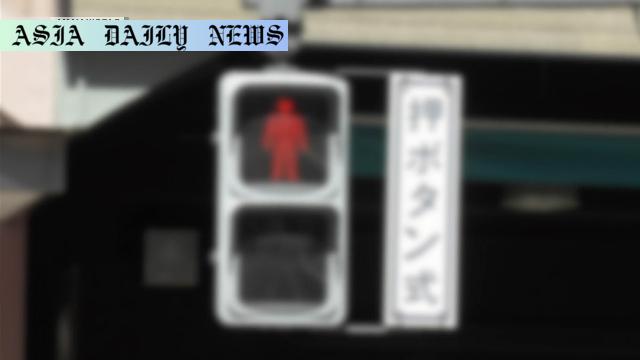Traffic Accidents – Japanese police statistics reveal a sharp rise in accidents involving students from April to June, urging awareness.
- Traffic accidents involving students tend to rise between April and June in Japan.
- 508 children were killed or seriously injured within these months in recent years.
- National Police Agency data shows a marked increase compared to January-March.
- 33.5% of accidents were caused by children running into streets.
- Authorities emphasize public awareness during the spring safety campaign.

Rising Concerns Over Student Traffic Accidents in Japan
Japan is grappling with a pressing issue as traffic accidents involving students surge during the months of April through June. This troubling trend has been highlighted by the National Police Agency’s analysis, which examined data from the past five years up to 2024. According to their findings, these months witness a significant rise in incidents, particularly involving elementary, junior high, and senior high school students. Tragically, 508 students were either killed or seriously injured between April and June, a stark jump from the 396 recorded from January to March.
These accidents often result from a lack of adherence to traffic rules, along with behavioral patterns such as running into streets or improper road crossing. Startlingly, in 33.5% of incidents involving elementary school students, children were found running suddenly into the streets. Another concerning observation is the increase in bicycle-related accidents, with the highest number recorded in June, peaking at 582 cases. This data underscores a worrying trend that coincides with the start of the new school year and the changing seasons.
Understanding the Underlying Factors
Authorities believe that the rise in traffic accidents among students may be partially attributed to their adaptation to new environments. With the beginning of the academic year in April, children face new routines, unfamiliar routes, and potentially crowded streets. Additionally, as students get increasingly comfortable with their journeys, they may pay less attention to traffic safety, inadvertently leading to accidents.
The data further indicates that in 40.9% of the cases, there were no violations committed by the students involved. This statistic highlights the critical role of other road users and infrastructure in ensuring safety. However, the remaining percentage emphasizes the importance of better education and awareness among children themselves. Running out into the streets, neglecting road-crossing rules, and ignoring traffic lights are among the primary reasons for casualties, accounting for a combined 53.6% of student-related accidents.
Countermeasures and Awareness Efforts
In response to this concerning issue, the Japanese police have launched a proactive campaign to raise public awareness about traffic safety during the annual spring initiative starting April 6. The emphasis is on educating both students and caregivers about the importance of abiding by traffic rules and being constantly vigilant on the roads. Schools are encouraged to play an active role by incorporating safety drills and educational programs addressing common mistakes and potential hazards.
Parents are also being urged to reiterate road safety measures at home, ensuring their children comprehend the risks involved and adopt safe practices. Additionally, authorities are working to ensure that roads near schools are adequately marked, patrolled, and monitored to minimize risks. Effective collaboration between local governments, schools, and families is pivotal to enhancing safety for young pedestrians and cyclists alike.
Final Thoughts
The rising number of traffic accidents among students in Japan is a sobering reminder of the importance of road safety. Focusing on prevention, education, and awareness will play a vital role in combating this trend and protecting the vulnerable younger population. The insights drawn from the National Police Agency’s data highlight the need for a multifaceted approach that involves not just students but also parents, schools, and the broader community.
Efforts to raise awareness and initiate campaigns during critical seasons can save lives and prevent injuries. With proper measures in place, Japan can hope to curb the alarming statistics and create a safer environment for its youth.



Commentary
Reflecting on the Traffic Accident Spike
The increase in traffic accidents involving students in Japan is a poignant issue that highlights the vulnerabilities of young pedestrians and cyclists. As the data reveals, children are often distracted or unfamiliar with their commuting routes, which can lead to tragic incidents. The issue serves as a call for all stakeholders—be it the authorities, schools, or guardians—to prioritize safety measures and reinforce their efforts to educate children about traffic rules.
The Role of Awareness and Education
One of the most critical aspects of addressing this problem is education. Schools should take an active role in conducting regular safety programs that inform students about the dangers of traffic accidents. These programs can include engaging simulations or role-playing exercises where students learn key concepts such as pedestrian crossings, bicycle safety, and the importance of obeying traffic lights. Additionally, parents must consistently ensure their children are mindful of traffic rules, setting an example by adhering to these rules themselves.
Importance of Infrastructure and Enforcement
Beyond education, infrastructure must align with safety goals. Well-maintained sidewalks, clear signage, and safe crossings near schools can significantly reduce risks. Greater investment in technology like automated pedestrian crossings and surveillance cameras will complement efforts to protect school zones. Moreover, stricter enforcement of traffic rules for all road users around educational institutions can create a deterrent effect, ensuring motorists are more cautious in such areas.
A Shared Responsibility
Ultimately, reducing traffic accidents involving students is a shared responsibility. Collaboration between parents, schools, police, and the community is essential to creating a safer environment. Campaigns such as the annual spring awareness initiative can be particularly impactful in fostering a culture of safety and mindfulness. Together, individuals and institutions can address the root causes and ensure that every child can navigate their journey to and from school safely.